TRADITIONS OF YUCATAN
Culture and Traditions in YUCATAN
The people from Yucatan integrate their beliefs, celebrations and ancient customs into their daily lives, and create a very special kind of magical syncretism. The handcrafts, the cuisine, the music, the folklore, and the traditions are irrefutable proof that Yucatan is a magic land with open, warm atmosphere, where visitors always feel welcome.
Archeology
Yucatan is the cradle of the Mayan culture and its historical legacy is unique in the world.
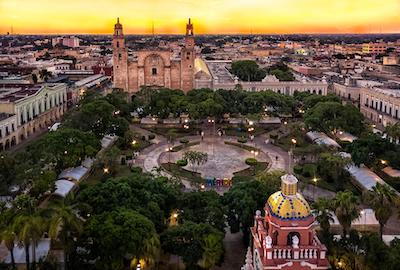
Historic Architecture
The “White City” and its surroundings display ancient buildings and haciendas from the 16th to the 20th Century.
Handcrafts
Yucatán is famous for the hammocks, “guayaberas”, the “panama” hat, the filigree jewelry in gold and silver and the Huipil with beautiful cross-stitch embroidery of flowers, all of them available in the Lucas Galvez Market and the surroundings of the main plaza in Merida.
Festivals & Traditions
The Hanal Pixán in the Mayan language means “food of souls.” As the sun raises every 31st of October so does the beginning of the celebration of this festivity and lasts until the 2nd of November of every year.
Tradition says the souls of the loved ones are still present, and the deceased faithfully arrive each year to visit and be honored by their family and friends. The celebration includes an altar with food, flowers wooden cross, among other things.
Gastronomy
The rich, distinct, and varied cuisine of Yucatan is one of the many reasons to visit this destination. The cooking delights of the traditional Yucatan cuisine are a mixture of ingredients used by ancient Mayas, and flavors brought from Spain, Caribbean and Middle East.
Among the most popular dishes are: cochinita pibil, pork marinated in orange juice and served with beans and red onion; salbutes, made from corn dough and stuffed with turkey, onion and avocado; panuchos, corn dough stuffed with beans; and papadzules, corn dough soaked in a green pumpkin seed sauce called kol and stuffed with hard-boiled eggs and later bathed in a tomato, onion and garlic sauce.
Traditions in YUCATAN
La Vaquería
In the traditional festivities carried out by the cattlemen, it is unknown from when, in remembrances of the classic Spanish festivals, our dairy farms took place. In the vaquerías the jaranas were danced, one of the first variants was “El Torito”.
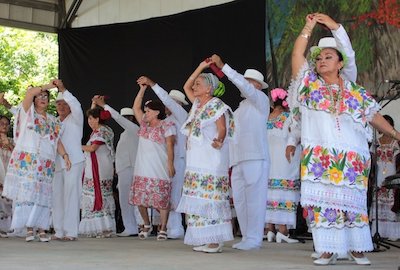
It is the Yucatecan dairy in itself, boisterous and exciting. They dazzle the flashing sparkles of their cross-stitch embroidered dresses and the colored ribbon that adjusts the black braids and heels on the head.
They with the squeaky and persistent patter of the espadrilles of the dark-haired guachapeadores. After a while of dancing, someone yells “bomb.” The orchestra stops, the dance is interrupted so that some of the performers can express the sharp sayings of the “bombs”, where the sense of humor that characterizes the Yucatecan is revealed.
Jarana
The jarana is the typical dance of Yucatán. There are two types: the 6 × 8 jarana is zapateada, it is the granddaughter of the Andalusian airs and the daughter of the mestizo sones; and the 3 × 4 jarana, which emerged later, being a waltz with the air of an Aragonese jota, from which it derives. The latter in its beginnings was exclusively danced, and with the passage of time texts made with rhymes were added.
The jarana is a zapateado dance without fixed steps or differentiation between men and women, and each person can make their own dance creations. The postures are upright due to the solemnity of the aboriginal dances, but in the waltzed parts they perform turns while raising their arms at right angles, like the jota dancers, snapping their fingers representing the Spanish castanets. Two beats of the timpani indicate that the dance has begun.
If at the end of each jarana there are few couples competing for the first place of resistance, the euphoria of the people runs wild in an animation towards their favorite dancers through the finery, which consists of putting several hats on their heads, one over the other, symbolizing the crown as a prize.
It is common for one of the dancers to stop the music while dancing, saying aloud: “bomb!” At that moment he recites a verse to his partner in a humorous way, always within the limits of decency. Originally from Spain, it represents a spark of ingenuity that causes an outbreak of joy and conviviality. Every Monday a Regional Vaquería show is presented at 9pm on the ground floor of the Municipal Palace. Calle 62 x 63 y 61, Centro.
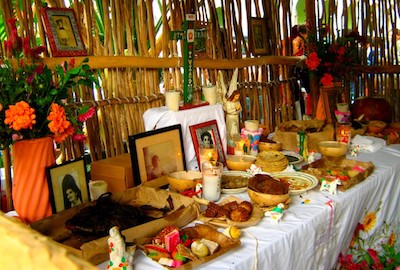
DAY OF THE DEAD IN YUCATAN – The Hanal Pixán
In Yucatan, among the Mayan Indians, there is a custom that comes from their ancestors: a distinctly Mayan custom mixed, after the conquest, with pious practices according to Catholic ritual. Work is until, of the Franciscans; who, not being able to uproot at once, in the conquered race, their ancient idolatrous rites, tolerated certain practices that were not opposed to dogma: such as honoring their dead, offering presents, lighting candles and burning aromatic resins.
Thus, to date, there is a pious practice among the Mayan Indians that originates from the sacred veneration that the Indian has for their dead relatives, whom they bury inside their homes. Due to this indigenous practice of burying the dead at home to keep them close, in order to be able to offer them presents that consisted of food, fruits and wax, the custom of making the “pibil-uahes” or “mucbipollos” was born on the days of the dead: food in the form of tamales wrapped in banana leaves with which they give gifts, in those mournful days, to the souls of their dead relatives, hence the “Hanal-Pixan”, which means: “banquet of the souls”.
In the houses and in the fields, the Indians put gourds of new atole and bowls of food dedicated to the deceased; and they firmly believe that, invisible, souls descend to take a part of it, which is what they call “taking grace.”
Culture in YUCATAN
Language
Mayan is the characteristic language of the region, however and like clothing, it has been lost, especially in the city of Mérida where it is only common to hear this language spoken among people who travel to the city for work or work reasons. of business. Like other traditions and / or customs, the Mayan language is kept alive in the populations of the State since it is transmitted from generation to generation.
Dance
In the Yucatan peninsula it is common to enjoy the main typical dance of the region, the jarana. In the Capital, these dances are performed in the colonies as part of celebrations and festivities for patron saints where the main dancers gather to enjoy these festivities. In the towns, the jarana is the traditional dance par excellence. This event is enjoyed on holidays, patron saint festivities, special events or on Sundays.
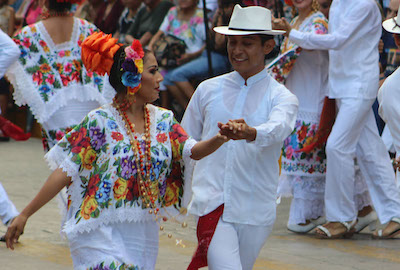
Clothing
The costume of the region is the traditional suit or guayabera, however in the city it is not so common to meet people wearing this clothing. This way of dressing goes back more to the surrounding populations which have less external influences, especially from the media.
Food
Yucatecan food is characterized by its outstanding seasoning as well as by the great variety of dishes that make it unique and special. The main touch of Yucatecan food are its ingredients, which preserve that strong and unmistakable flavor, among them are: achiote, red, black and white messages, purple onion, pepita, oregano, epazote, habanero pepper, etc.
In Mérida, as in towns and police stations, there is a great variety of restaurants of all categories specialized in Yucatecan food; It is equally traditional to find stalls that offer food alternatives from the region. An important complement to Yucatecan food are the desserts which are made mostly with typical fruits; We cannot omit the traditional drinks and snacks that should not be missed to make your trip to Merida an unforgettable experience.
Parties and celebrations
Mexico is characterized by being a country rich in traditions and Yucatán is not far behind. Both in the city and in nearby towns, a large number of festivals and celebrations can be enjoyed throughout the year, commemorating everything from patron saints to city or town anniversaries.
These festivities mostly last a week in which the town dresses up, adorning the town’s church, the police station or those places that will host the various organized activities with colored flags and ornaments alluding to the occasion. As traditional festivities, you cannot miss the dairy farms, bullfights, guilds, dances with musical groups, and fairs where a number of typical products of the region are exhibited.
Music in YUCATAN
Any plaza or garden is a good place to listen modern day troubadours, or the rhythmic sound of jarana. Yucatan is famous for the music they play, called the trova. The trova is played by troubadours, and has brought worldwide attention because of the music. You can enjoy this music and the traditional Jarana dancers in any small plaza or in a beautiful park.
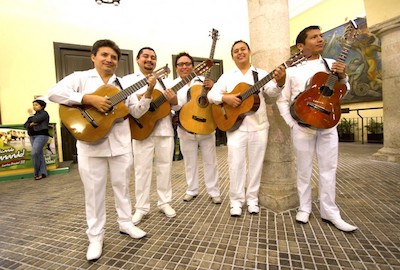
The Yucatecan song
The Yucatecan song flourished at the end of the last century with a decisive European influence and was acquiring Cuban influence with the guaracha, the bolero, dance and the harpsichord, finally receiving Colombian influence with the bambuco. Thus the Yucatecan song is the happy result of a confluence of traits from different cultures, passed through the sieve of our mestizo personality.
Some of the most important Yucatecan musicians and composers are: Cirilo Baqueiro (Chan Cil), Fermín Pastrana (Huay Cuc), Antonio Hoil; In another generation we have: Ricardo Palmerín, Guty Cárdenas and Pepe Domínguez. In current times, our most prominent composers are Pastor Cervera and Sergio Esquivel.
The Yucatan Trova is considered a national treasure, combines lyrical poetry with Cuban rhythms, bolero and Colombian bambuco.
Merida offers musical performances almost every day:
On Monday evenings at 21:00 hrs, the Vaquería takes over the street in front of the Palacio Municipal. This colorful dance has its origins in the Yucatán’s colonial days. In their most beautiful white dresses, embroidered with flowers, the wives of the local cowboys (or vaqueros) were in charge of the festivities and led the dance.
On Tuesday, head to the Plaza de Santiago for the “Remembranzas Musicales” at 20:30 hrs. In one of Mérida’s most beautiful plazas, bands play the greatest hits of the Big Bands, and hundreds of locals dance the night away.
On Thursday, head over to the Plaza de Santa Lucia for the weekly traditional “Serenata Yucateca” at 21:00 hrs. This is the best known of Mérida’s free concerts, and for over forty years, has invited some of the peninsula’s most famous composers and musicians to the stage.
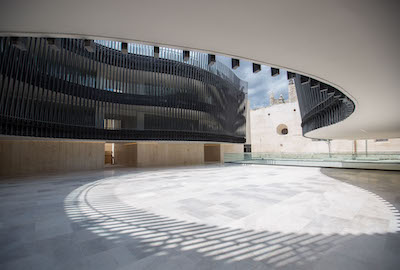
On Friday, “Mérida Cultural cerca de ti” (Cultural Merida close to you), in many parks of the city at 21:00 hrs various musical shows are presented.
On Saturday, from 21:00 to 02:00 at the foot of Paseo Montejo, near the Plaza of Santa Ana, a stage is erected for the “Noche Mexicana”. You can enjoy a musical tribute to the sounds, styles and dances of Mexico.
There’s a constantly changing line-up, as singers, bands and dance Troupes from across the country are invited to participate.
On Sunday, “Merida en Domingo”, in the Plaza Grande and 60th Street to the Santa Lucia Park from 9:00 to 21:00 hrs, you can enjoy the Yucatecan cuisine, crafts, folklore, traditional and contemporary musical performances and dances.
Beside you can enjoy the Sunday Bicycle Route from 8:00 to 12:30 hrs. The route runs from La Ermita de Santa Isabel to the Main Plaza, then north along Paseo de Montejo, this is a nice way to wonder around this city.
Additionally, the Yucatan Symphony Orchestra plays two regular seasons at the Jose Peon Contreras Theater, and features classical music, jazz and opera every Friday at 21:00 and Sundays at 12:00.
Festivities in YUCATAN
The main festivals and traditions in Yucatán.
Ganadera Fair and Festival of the Three Kings
Regional livestock exhibition. Trade and tourist fair. Religious festivities, horse races, palenque and cattle auction. From December 30 to January 6 in Tizimín.
Feast of Santa Inés
Religious festivities, dairy, bullfighting, indigenous dances of the Kotzal Tzo, the Hok-Chilib and the Head of the Pig. From January 12 to 22 in Dzitas.
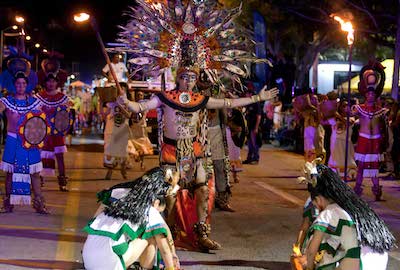
Carnival
Movable date. In Mérida there are parades of floats, masks and costumes. Popular dances and vaquería, as well as various recreational events.
Fiesta de la Candelaria
Vaquería and popular dance, religious celebrations, guilds, procession, bullfight, rides, bazaars. From January 26 to February 3 in Valladolid.
Feast of San Antonio de Padua
Vaquerías, bullfight, popular dance, indigenous dance of Kotskal Tzo and religious festivities. June 12 in Tinum.
Celebration in honor of San Pedro Apóstol
Native dances of the Head of Cochinoy de Los Ramilletes. From June 26 to 30 in Panabá.
Feast of Santiago Apóstol
Religious celebrations, masses, processions and a peculiar novena. Popular dances, guilds and mayordomías. From July 18 to 25 in Halacho.
Feast of the Holy Christ of the Transfiguration and Fair of the Santiago Neighborhood
The only one that is preserved from the old festivals of the city’s neighborhoods. Religious holidays, masses, guilds and acts of veneration. Popular fair, bazaars, mechanical games, popular dance and cultural events. From July 28 to August 6 in Mérida.
Feast of San Telmo, Patron Saint of Fishermen
Religious celebrations, processions and masses. Popular fair: mechanical and recreational games, bazaars, snacks. Popular music and dances. From August 7 to 13 in Progreso.
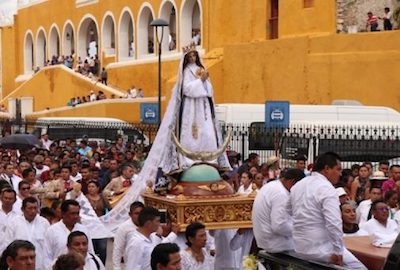
Feast of Our Lady of Izamal
Religious celebrations: unions, pilgrimages, processions and masses. Popular fair, dances, vaquería, fireworks. On August 15 in Izamal.
Fiesta del Santo Cristo de las Ampollas
Traditional religious celebration. Guilds, masses, acts of veneration, popular dances, fireworks. From September 16 to 30 in Mérida.
San Juan Neighborhood Fair
Religious celebrations, masses, novenaries and popular dances. From October 7 to 15 in Ticul.
Celebration of the “Hanal Pixan” or of the Holy Dead
Traditional Festival of the Whole Community: millennial festival in honor of the deceased, religious acts, visits to the pantheon. Day of the Dead food. Ancestral profane acts and cultural events. From October 30 to November 2 in various municipalities.
Tribute to the Virgin of Guadalupe in the San Cristóbal Neighborhood
Religious acts of veneration, offerings, pilgrimages, unions, processions and masses. Sporting events, popular fair and rides. From December 11 to 13 in Mérida.
Haciendas
Since the 16th century, Haciendas in Yucatán worked as a European feudal system. They were efficient farms and manufacturing centers producing meat and diverse agricultural products for export. By 19th century, most haciendas produced sisal ropes. Sisal, is a variety of the agave plant, used for everything from rigging on ships to placemats and carpets that we use today.
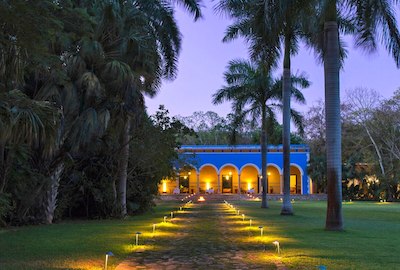
Haciendas are Mexico’s equivalent to American southern plantations, mid-western ranches, and European land estates. Haciendas became symbols of wealth and culture, adorned in a very specific way with architecture, furnishings and art from around the world. Haciendas maintained huge fields of henequen, tended by hundreds of men.
The main house (casa principal) was usually the largest building, where the owner (hacendado) kept his living quarters and where most of the administration occurred. Henequen processing took place in the machine house (casa de maquinas). There was usually a chapel (capilla), a house for the foreman (casa del mayordomo), and many other smaller buildings for storage and living quarters.
After the Mexican Revolution and the subsequent invention of synthetic fibers, most haciendas were abandoned to decay in the jungle. In recent times, they have been “rediscovered” and some haciendas have been renovated into luxury hotels, into restaurants and, in some cases, into museums. Among the most important, we find; Katanche, Kancabchén, Ochil, Petac, San José Cholul, Santa Rosa, Temozon, Teya and Yaxcopoil that was considered to be one of the most important rustic estates because of its size as well as its magnificence and today, it is a museum.
More Tourist Attractions in YUCATAN
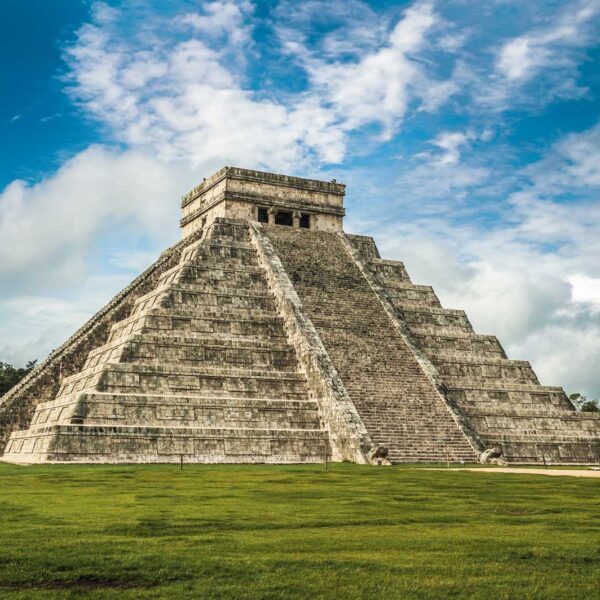
Chichen Itza
Chichen ltzá (the city on the edge of the well of the Itza), was the most important regional capital of the Mayan area in the years 750 to 1200 AD, a bridge between the Mesoamerican Classic and Postclassic periods. His remains, still well preserved, confirm the fame assigned to him by the chronicles and indigenous legends of Yucatan. Its vestiges show that the traditional Mayan civilization was enriched with other cultural currents of Mesoamerica.… Read More
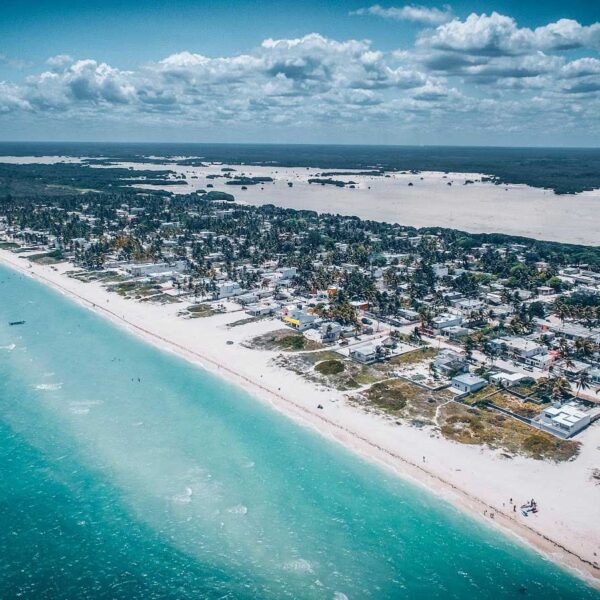
Beaches in Yucatan
There is a wide variety of beaches in Yucatan, ranging from Progreso, which is only 20 minutes from Merida, to more distant beaches such as San Felipe. They all offer a peaceful environment where you can relax, camp and enjoy nature, or practice various sports such as fishing, kayaking, SUP and many other water activities. Among the options that Yucatan offers, there are some that are true paradises such as Celestún and Río Lagartos where the sky is painted pink because they are the habitat of important colonies of pink flamingos. Most of them are wide white sand beaches and in several you can savor some of the delicious typical dishes of Yucatan.… Read More
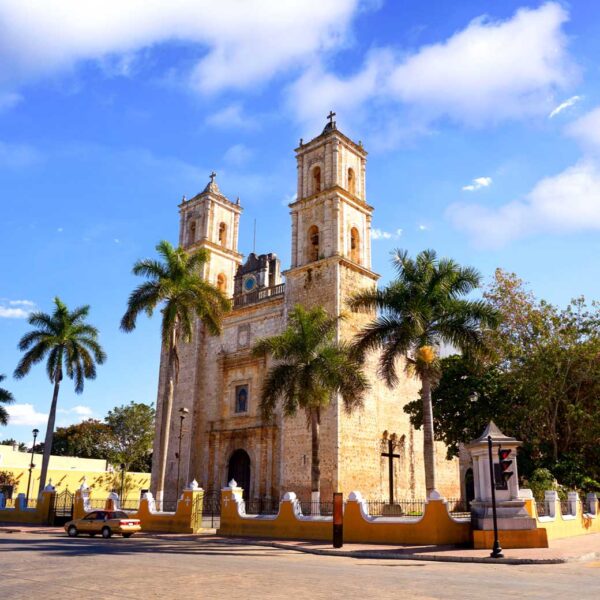
Magical Towns in Yucatan
Yucatán is a region of the country that protects great natural and cultural treasures that are very important to the country, two places that perfectly exemplify the importance of Yucatán in the history of Mexico are its magical towns, Izamal and Valladolid, two destinations that in its streets they protect all the magic of Yucatan.… Read More
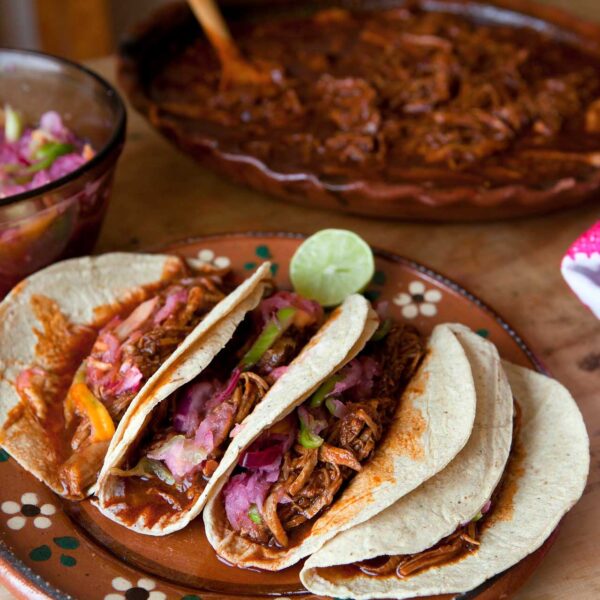
Gastronomy of Yucatan
The gastronomy of Yucatan has its origins in the traditional cuisine of the Mayans with some Spanish ingredients. Its dishes are well known for their particular aroma and flavor, because they are prepared with condiments such as oregano, sour orange, coriander and mainly different types of chili. Other ingredients are the famous “recados”, which are a kind of pasta with which a very characteristic flavor is given to meats, such as the black “recados” or the red “recados”, among others. The “recados” are simply various species of condiments and ground and mixed chilies that form a paste, and that are the main base of many Yucatecan dishes. So in addition to a trip through the incredible jungle landscapes of Yucatan, the cenotes, the archaeological sites, cities and towns, you should enjoy a whole gastronomic trip through the beautiful land of the Mayans.… Read More
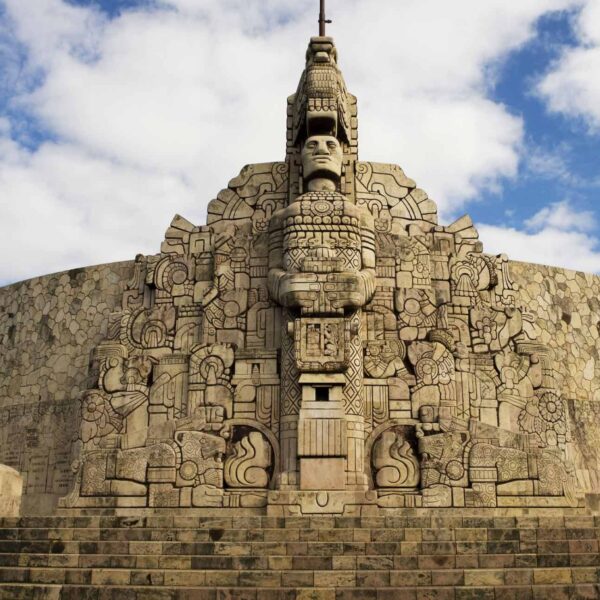
Merida
Merida is one of Mexico’s most important colonial cities, an architectural jewel traditionally known as “La Ciudad Blanca” (The White City). The Mayan World with the generous hospitality of its people surrounds it. It features traditional neighborhoods, tree-lined stately avenues, world class services, varied cuisine, night life and modern installations which guarantee your business success as well as an indelible memory of a unique experience. Mérida has become the “Medical Capital of the South-east Mexico” with a vast network of hospitals, clinics, laboratories as well as private and public doctor’s offices; the health care in the city is excellent and very affordable. Many doctors are English-speaking, often having done their training in the United States; the facilities are state of the art but cost less.… Read More
Guided Tours in YUCATAN
Flights & Hotels in YUCATAN
More Tourist Attractions in MEXICO

Capital Cities
Folklore, gastronomy, literary culture, art and exhibitions, is what you will find in the capitals of the states of Mexico. To the north, colonial Mexico, Puebla, Guadalajara, Guanajuato, the Sonoran desert and the California peninsula. To the east Veracruz and the gulf. To the west Acapulco, Oaxaca and Tuxtla Gutiérrez. And to the south the Riviera Maya and the pyramids of Chichén-Itzá, Tulúm and Cobá in Yucatán, Palenque in Chiapas, the cenotes, and the Central American jungles.… Read More

Beaches
On the Beaches of Mexico you can immerse yourself in the intense blue ocean of the Pacific bays, sunbathe on the shore of the warm and transparent waves of the Caribbean Sea in Quintana Roo or even rest on the beautiful coasts of the Gulf of Mexico. Mexican beaches hide wonderful secrets for the traveler. By visiting them, in addition to enjoying the excellent climate and water activities, you can discover splendid archaeological sites and interesting colonial cities without traveling long distances.… Read More

Ecotourism and Adventure
Mexico is one of the best countries for Ecotourism as it has a great variety of flora and fauna, as well as a large number of refuges for extraordinary species. You can enjoy recreational activities of appreciation and knowledge of nature through contact with it, such as: stargazing, observation of natural attractions, wildlife and bird watching. Throughout México there are more than 176 protected natural areas, 5 of them considered by UNESCO as Natural Heritage of Humanity. Just for this and much more, we believe that Mexico is a Paradise for Ecotourism.… Read More

Magical Towns
A Magical Town is a place with symbols and legends, towns with history that in many cases have been the scene of transcendent events for our country, they are places that show the national identity in each of its corners, with a magic that emanates from its attractions ; visiting them is an opportunity to discover the charm of Mexico. The Magical Towns Program contributes to revalue a set of populations in the country that have always been in the collective imagination of the nation and that represent fresh and varied alternatives for national and foreign visitors. A town that through time and in the face of modernity, has conserved, valued and defended its historical, cultural and natural heritage; and manifests it in various expressions through its tangible and intangible heritage. A Magical Town is a town that has unique, symbolic attributes, authentic stories, transcendent events, everyday life, which means a great opportunity for tourist use, taking into account the motivations and needs of travelers.… Read More

Gastronomy
The Gastronomy of Mexico has a great diversity of typical dishes, which is why it was recognized by UNESCO as Intangible Heritage of Humanity. The basic and representative ingredients of Mexican dishes are: corn, coriander, chili, beans, piloncillo, nopal and tomato. Mexican cuisine is also characterized by its sauces, which serve as an accompaniment to traditional dishes, prepared based on spices.… Read More

Traditions in Mexico
It is practically impossible to make a meticulous, and above all, accurate selection of the places to visit in Mexico. Each place that our country houses is unique and beautiful in its own way. Mexico, with its nearly 2 million km², has a large number of scenarios to offer, as well as endless activities to do. Do not lose your way and enter the places to visit in Mexico. In Mexico, apart from the beaches and its famous archaeological sites, there are many other really interesting sites and activities that you should know. In the surroundings of the main cities you will find places full of culture and tradition, where you can spend relaxing, interesting and fun vacations. On your trip through Mexico you cannot stop obtaining souvenirs, the crafts that are made here are of the highest quality and recognized worldwide. A shopping tour cannot be missed.… Read More

Archaeological Sites
The Archaeological Zones are the cultural past of every Mexican. You will be amazed at the ambient, nature and the environment that surrounds them. Climbing to the top or being around it will take us back in time to admire every detail. México is a country of culture and traditions, many of which we have inherited from the pre-Hispanic inhabitants of this vast territory, although it is true that there were more settlements in the central and southern part of the country, it is also possible to find some archaeological remains in the north.
… Read More

States Of Mexico
Mexico has an incredible diversity of landscapes, where the beauty of its beaches, internationally recognized, stands out. In its vast territory of coasts, there are beaches of unparalleled beauty, and colorful landscapes. A large network of first-class hotels and tourist services is available to visitors to these beaches. Mexico is also mystical places, dotted with archaeological testimonies inherited from its original inhabitants. Monuments made by the Mayas, Aztecs and Toltecs are located in magical landscapes, like lighthouses in an ocean of natural beauty. They offer visitors buildings that tell their history, and museums that collect their cultural heritage. And that keep alive ancestral traditions, in ceremonies and festivals, where you can enjoy cultural activities and entertainment.… Read More

